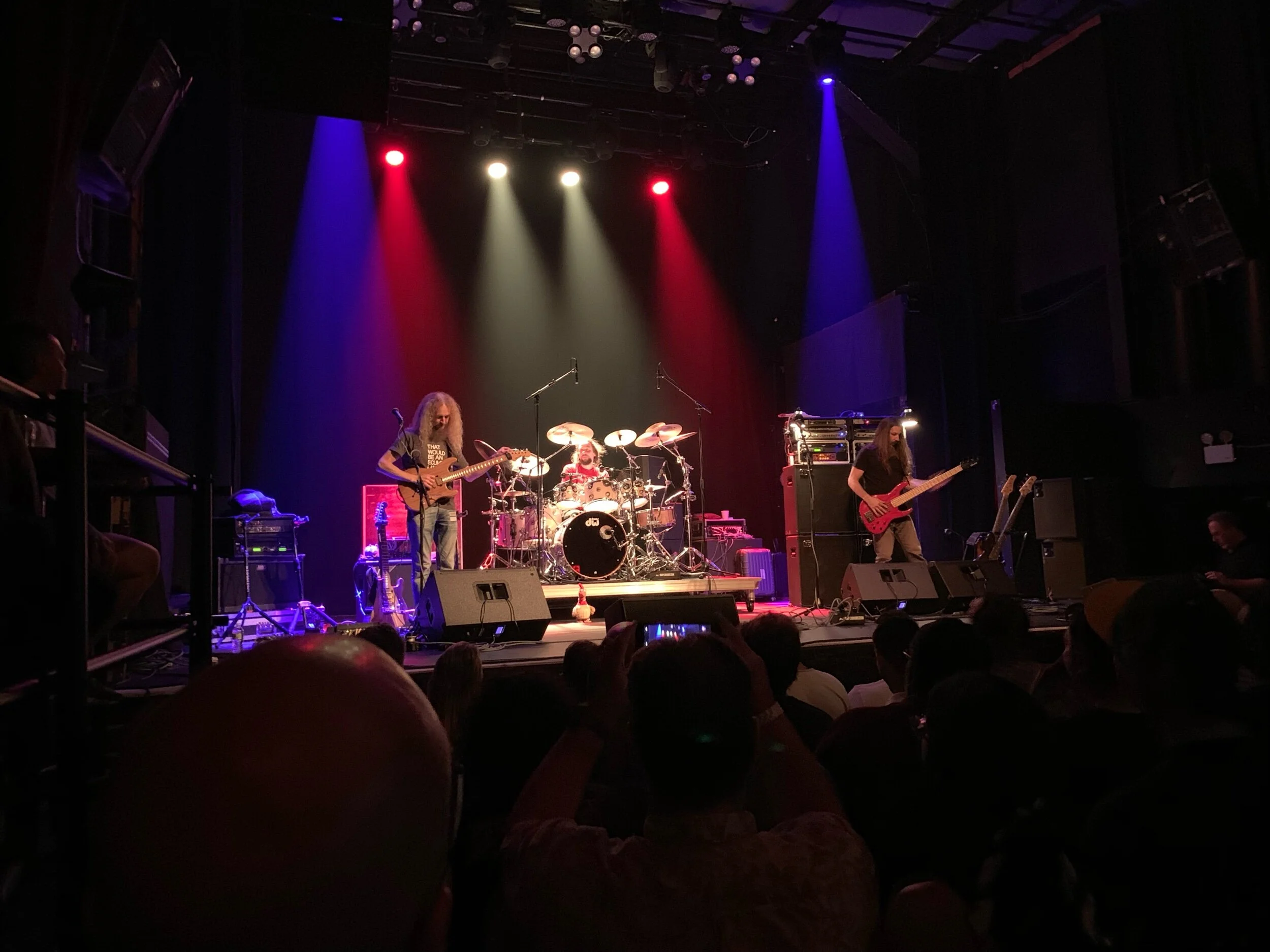Guthrie Govan is without a doubt, one of the best guitarists of our time. He's had a rich history of teaching guitar, whether it be in books, through places like JamTrackCentral, or even on YouTube, there is a wealth of his information out there.
I’ve learned so much from Guthrie over the years. There’s a myriad of different videos on his technique - how to bend, his legato work, sliding, note selection and more.
In today’s post I want to strictly talk about 4 big things I learned from watching this video series, when Guthrie gave a masterclass at Joe Satriani’s G4 camp.
While I think this post is a good cheat sheet of things to know, you should definitely invest the hour and change to watch Guthrie break down each concept, and play examples. With that being said, here are my notes that I took while watching the video.
Music Is A Language
There are some common things that we all know and agree on instinctually - whether that be that a major chord sounds happy or that a minor chord sounds sad, and what things like tempo do to our emotions.
It’s important to learn how to learn the language of music. You might’ve learned your first language by listening to other people saying words, emulating others, and by trial and error. If you want to learn music like you’d learn you first language, you have to immerse yourself so you're forced to speak the language, rather than translate it or think about it constantly.
Guthrie points out that grammar is music theory. It’s important to learn theory, but then try to play instinctively. It’s never a bad thing to learn too much theory - as Guthrie says, it’s good to have headroom, or an “extra gear” you can always shift to if you have to.
But, how do you learn the language in the first place? That’s where the second point comes in.
Active Listening Is King
How did Guthrie get so good? Active listening. Guthrie learned the vocabulary of multiple genres - rock, fusion, country and others, and he’s fluent in all of those styles.
But learning different genres of music isn’t all that made Guthrie great. He also learned tv themes, ringtones, weird sounds, sounds of nature, and much more. There are so many melodies you can hear around you.
At one point in the lesson Guthrie hears some birds chirping, and tries to emulate them on the guitar - seriously.
How to Become An Instinctive Player
Once you’ve learned theory, try and sing everything you play. Or at least sing internally in your mind if you’re too shy to sing out loud. Try and predict what note will come next before you play it by hearing it in your head. It might be difficult at first, but your accuracy will improve over time. Knowing the theory behind what you’re playing will help, but then you should attempt to break out of box shapes.
At one point Guthrie talks about a student he taught, who asked about a classic George Benson video, where he was playing guitar and scatting at the same time. He asked “Is he playing what he’s singing, or singing what he’s playing?” The answer is ultimately both. At some point, you’ll get proficient at singing melodies ahead of time, but also allow the guitar to dictate what you’ll play next.
The other important thing to practice, if you want to become a better instinctive player is to transcribe as much different stuff as you can. Guthrie says this is where most of his greatness came from - transcribing and beginning to hear and see patterns of music and melodies.
How to Use Scales
No one got famous playing scale runs over and over, even if they were accurate or fast - I feel like there are some shred jokes I could make here. When learning a scale, have music so you can actually write riffs using the scale. I’ve talked about this at length, as soon as you learn a new bit of theory, put it in to a musical situation as soon as you can.
With scales, try to play them as slowly as possible at first. What role does each note have to play in the scale? Playing the scale slow will allow you to hone in on each note.
Playing the root over and over will be boring and is too safe. Play with the 5th, the 3rd, and other notes to tease the listener’s ear. Tension and release is important, and you can use notes as punctuation depending on what note it is in the chord quality. Use passing tones to get from obvious note one to obvious note number two. Depending on the scale or mode, some notes might sound better than others, which is why it’s important to learn the theory behind what you’re playing.
If you’re creating a lick, try and stray from using the root note first. Has any cool lead started on the root? Try and be more adventurous with intervallic jumps. This will initially lead to less confidence on if you’ll hit the “right note”, but over time will make your leads sound more interesting.
How do you know what notes/scales to use over the chords? Listen to the music, and don’t be so constrained by scale shapes. It’s your solo!
What’s Your Favorite Masterclass and What Did You Learn?
I love watching Guthrie’s instructional videos, and learning from his songs. Even breaking down a couple of bars of his music is very helpful, and could introduce new and exciting things into your playing.
What’s a great masterclass you’ve watched that’s really made an impact on you? Let me know by reaching out on Twitter, Instagram or Facebook!
Header photo: Kris Clarehout
